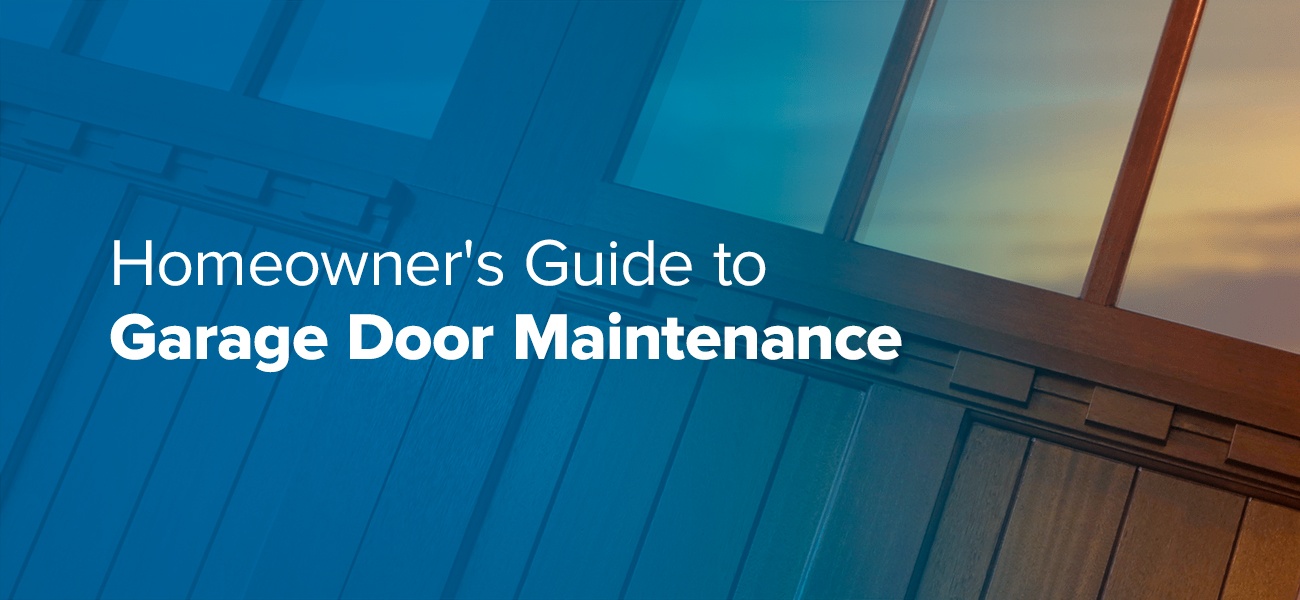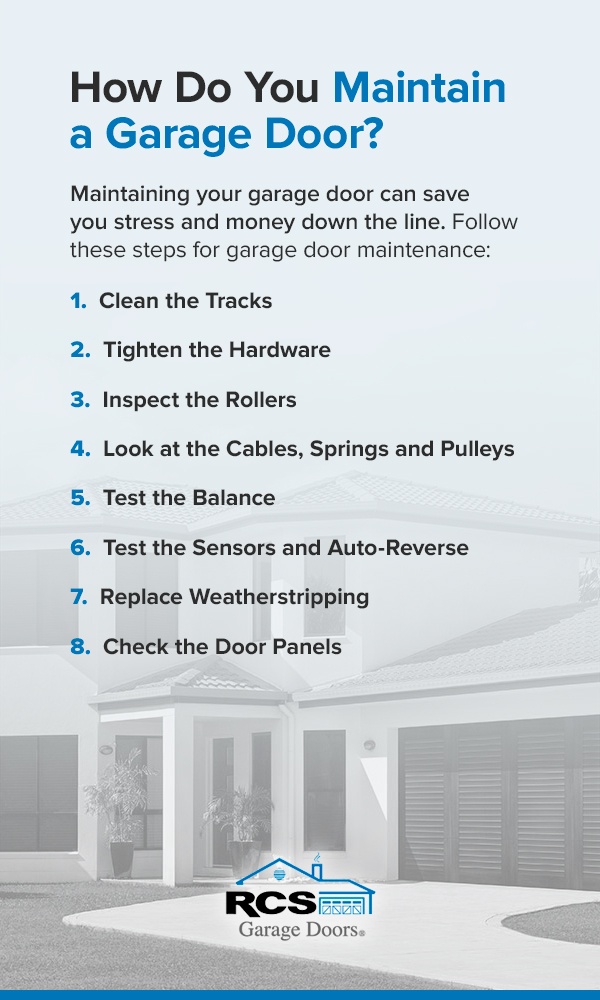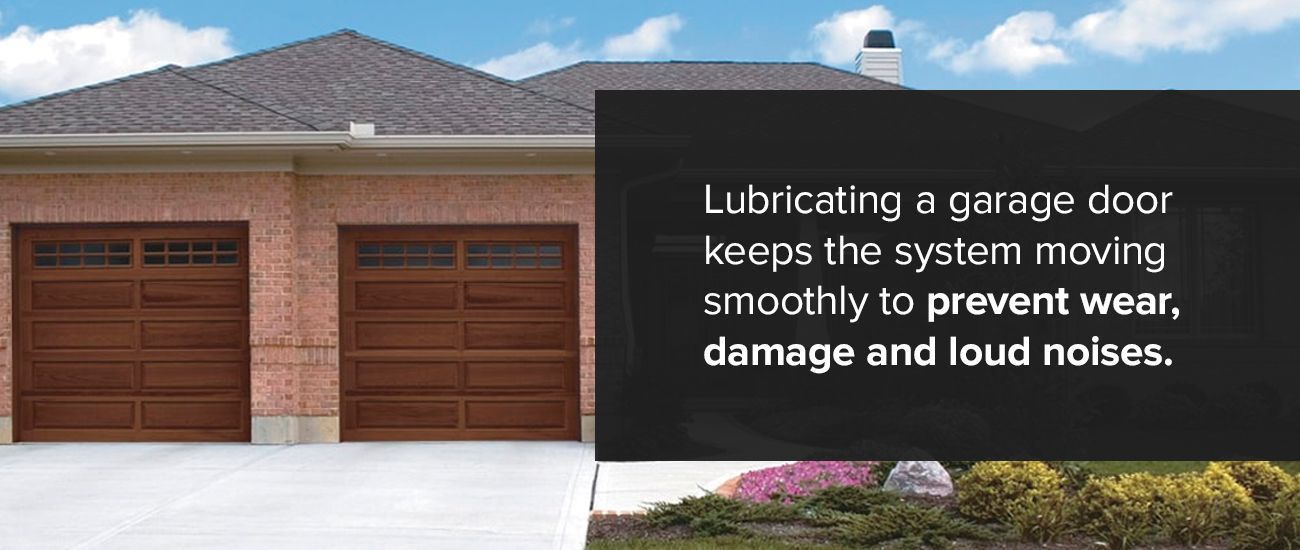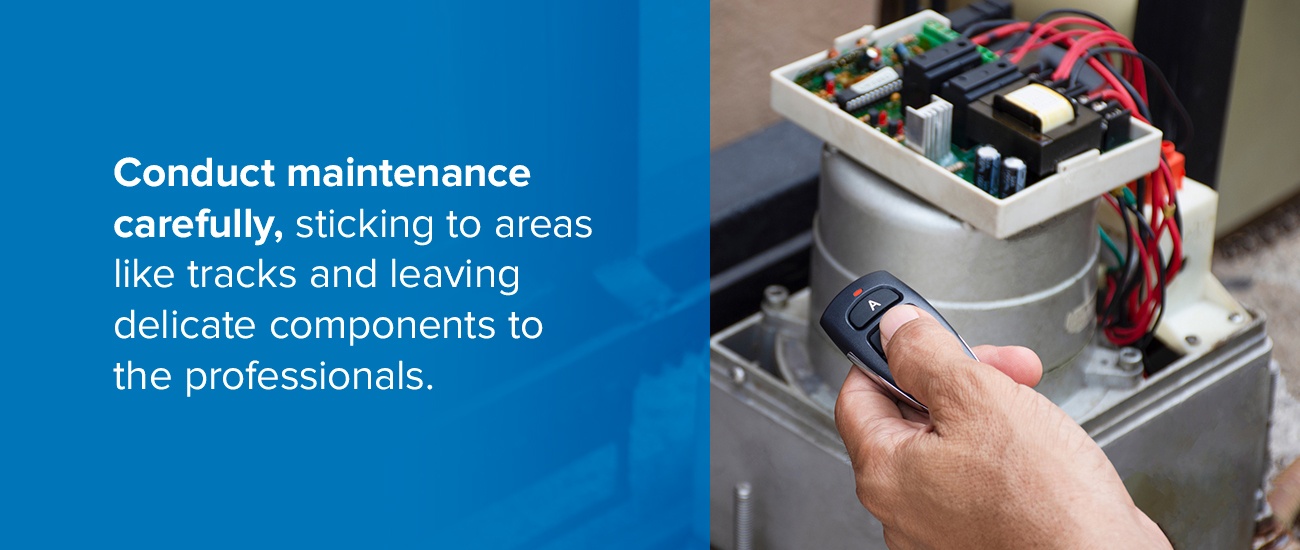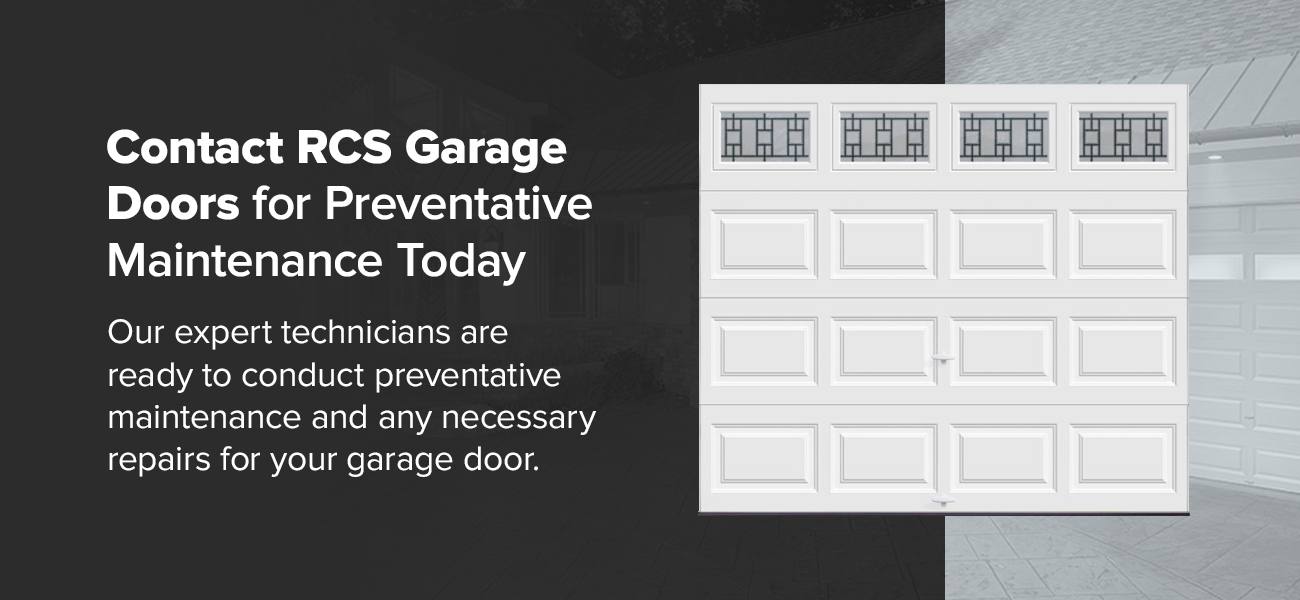We’re often asked, “Do I really need garage door maintenance?” “Is garage door maintenance necessary?” To answer those questions, let’s walk through a scenario.
Imagine you’re running late to work one morning, rushing to the garage to get your car, but the garage door doesn’t open. Or, perhaps you come home, it’s pouring rain, and you’re suddenly stuck in the driveway because your garage door won’t work.
Your garage door is an essential entry point for your home, and when it doesn’t work as it should, it’s a major inconvenience. It often becomes a safety hazard and full repairs can be costly. However, proper garage door maintenance can help prevent inconveniences and dangers.
You know that garage maintenance is necessary, but how do you maintain a garage door? It may seem intimidating if you’ve never done it before. There are plenty of components, hardware and mechanisms to check. Don’t let that intimidate you, though. Preventative maintenance is essential, especially for an overhead door and its opener. In this guide to garage door maintenance, we’ll tell you what you need to know, from how to lubricate a garage door to other preventative maintenance tips.
Contact Us Today for Garage Door Services
How Often Do Garage Doors Need Maintenance?
Garage doors do need regular maintenance, but in most cases, checking your door even just twice a year will help maintain your overhead door and opener. You don’t have to look at your garage door system too frequently; taking care of things seasonally will help keep everything in working order.
Of course, emergencies or other concerns may disrupt your maintenance schedule. If you notice issues with your garage door, from odd noises to improper door operation, you may need emergency maintenance or repairs. You should also check your garage door system if you experienced extreme weather, like flooding, or if a car or large equipment runs into the door.
How Do You Maintain a Garage Door?
Maintaining your garage door can save you stress and money down the line. You just have to know what components to check and what issues to look for. This process can be easier if you break it down by garage door system components. Follow these steps for garage door maintenance:
1. Clean the Tracks
Over time, debris and rust can develop along the tracks of your garage door system. That could impact your door’s operation, as components can’t move as smoothly as they could if the tracks were clear. If your roller tracks aren’t clear, use an old toothbrush to dislodge dirt, grime or grease. Once you’ve removed significant buildup with a brush, spray the tracks with disc brake cleaner. Wipe the tracks with a clean rag to remove the cleaner and any grease or debris that remains.
2. Tighten the Hardware
Over the course of a year, you may use your garage door up to 1,500 times. As it opens and closes, the vibration of the components can loosen the hardware, from brackets to chain screws to bolts. Check that the brackets that hold garage door tracks to the ceiling and wall are tightened appropriately. Tighten any loose nuts and bolts throughout the system. While you’re checking these fasteners, replace ones that are rusted or damaged.
3. Inspect the Rollers
Over time, your garage door rollers could wear out. Check these parts with your twice-yearly maintenance checks, and know they’ll need to be replaced every five years to seven years. You’ll know you need to replace a roller if it has cracked, chipped or worn.
You might not want to attempt to remove or replace the garage door rollers yourself. The bottom roller brackets are attached to lift cables, which are under high tension. You risk damage or injury if you try to repair this component yourself without proper knowledge. Call your garage door professionals to install replacement rollers and lubricate moving parts.
4. Look at the Cables, Springs and Pulleys
These are more components you shouldn’t try to replace on your own, but you can check them for damage and wear. The lift cables and pulleys of your garage door attach to the bottom roller brackets, creating a connection from the springs to the door. The springs you have will depend on your garage door system, with either:
- Extension springs: These thin, long springs go along the overhead or horizontal part of the door tracks.
- Torsion springs: These springs are mounted above the door opening to a metal rod.
Look for broken strands, stretched springs or other wear & tear or damage issues. If you notice anything, be sure to contact a professional service technician to inspect and replace the damaged parts.
Want to DIY? Read our guide to adjusting garage door springs!
5. Test the Balance
Your garage door’s balance refers to the tension in the springs. If the tension is too high or low, your garage door isn’t in balance. When that happens, your opener will have to work harder, putting extra wear on the system. The springs and door should be in balance so it doesn’t take much force to open or close the door.
To test your garage door’s balance, pull the release handle on your automatic opener so you can operate the door manually. Carefully lift the door from the closed position until it’s opened about halfway. A balanced door will remain in that position without your help. If the door falls closed or springs open, the system is unbalanced. While you can test the balance of your garage door on your own, you shouldn’t attempt to repair it without a professional technician.
Your automatic garage door opener comes with a sensor safety feature and auto-reverse. The sensor feature reverses the garage door to open back up if it begins closing and something is in its path. This is called a photoelectric system, and it features sensors, also called eyes, on either side of your garage door opening.
To test the photoelectric system, start closing the garage door. Pass something in front of the sensor that you can remove if the sensors don’t work. The door should stop closing and reverse back to an open position. If it continues to close even as you’re passing an object in front of the sensor, you need a professional to inspect, replace or repair the safety feature.
Automatic garage doors also have a pressure sensor to prevent the door from closing all the way if something is in its path. Consult your garage door operation manual to see if your opener includes this feature, as it is now required for all automatic openers. If yours doesn’t have it, you need to replace your garage door system right away.
If you do have auto-reverse, you should test it to ensure it’s working properly. To test this feature, place a scrap wood board flat on the ground under the door. Stand clear and close the door. When it reaches the scrap wood, it should reverse and open again. If it doesn’t, you may have to consult your manual to see how to adjust the safety feature. Contact a professional for assistance and any repairs your automatic garage door opener may need.
7. Replace Weatherstripping
Garage door weatherstripping is the rubber, PVC or other material along the bottom of the door. You may also have some on the sides of your door. This material helps keep out water, hot air in the summer and cold air in the winter when the door is shut. Over time, this material can crack or peel away from the door or the garage. If you notice any problems with your door’s weather seal, it’s time to replace it.
Depending on your garage door and its weatherstripping, it could be nailed into place or slid into a groove along the door. Make sure you get the right kind of weatherstripping that matches what you currently have so you can install it correctly. Removing the damaged material and not replacing it or leaving the damaged material up could impact your garage’s temperature. It could also let in pests and water when your door is closed, so don’t skip this maintenance step.
8. Check the Door Panels
While you’re checking the other components of your garage door system, don’t forget to look at the door itself. Manufacturers make garage doors out of different materials, and how you care for your door depends on the material. See if your garage door has any of these surfaces and maintain them accordingly:
- Steel: Check for rust spots, which you’ll have to sand, prime and paint.
- Fiberglass: Wash the surface with an all-purpose cleaner.
- Wood: Wooden doors can warp, chip and have water damage. Scrape away peeling or chipped paint, and sand and repaint the door.
To fix scratches or other blemishes on the garage door panels, you don’t have to replace them. Simply paint over the marks to maintain the appearance of your overhead door. If you have significant damage to your garage door, you may need to have a professional replace panels or the entire door, depending on the damage. For a stunning upgrade, consider our Canyon Ridge® Collection Limited Edition series, which features insulated carriage house garage doors with faux wood overlays.
Garage Door Maintenance With Lubrication
Another significant part of garage door maintenance is lubricating components of the system. When it comes to keeping your garage door system operating smoothly, you probably have a lot of questions. What should you use to lubricate garage door tracks? Is silicone spray good for garage doors?
Lubricating a garage door keeps the system moving smoothly to prevent wear, damage and loud noises. Decide between the two types of garage door lubricant, either silicone or lithium grease. Silicone spray reaches into tight spaces, protecting, preserving and waterproofing garage door components. Lithium grease creates a moisture-reducing barrier and helps prevent friction. Avoid using WD-40 because it doesn’t provide adequate lubrication.
You don’t need to lubricate every component of your system. For instance, you shouldn’t use lubricant on a belt-drive opener. Instead, focus garage door lubrication on:
- Rollers: If your garage door has metal rollers with unsealed bearings, spray the bearings with silicone spray oil. Do this after using an old toothbrush and a rag to remove any debris. If you have nylon rollers with sealed bearings, spray lubricant into and around the rollers’ stems.
- Pulleys or bearings: Depending on whether you have an extension or torsion spring opener, you can lubricate different parts of the system. For an extension spring, lubricate the pulleys on the opener. With a torsion spring opener, you can lubricate the bearing.
- Hinges: If your garage door has metal hinges, lubricate them where they pivot and wipe away excess lubricant. Don’t lubricate plastic hinges because the lubricant could break down the plastic.
- Springs: When you look at your garage door system, you may be wondering — should you lubricate garage door springs? You can lubricate garage door springs, but don’t use too much lubricant. You just want to spray enough so the components can move better. Don’t spray so much that lubricant is dripping off the springs. When working anywhere near the springs, be sure to practice extreme caution. They are under immense pressure and can be hazardous if handled incorrectly. If you are unsure how to lubricate your springs, it is best to trust a professional.
Many homeowners also wonder, “Should you grease garage door tracks?” Garage door experts have differing opinions on this, with some recommending you clean and lubricate the tracks, while others suggest only cleaning them. Keeping the tracks clean and lubricating different components instead is the best way to ensure your door functions as it should. If you want to lubricate your garage door without the help of a professional, you can find equipment at most hardware stores. However, it’s always better to contact a service technician if you have any doubts about the process or what to use to lubricate a garage door.
Garage Door Maintenance Tips
Before you inspect your overhead door and opener, prepare with a few more garage door maintenance tips. These suggestions will help you know when to conduct garage door maintenance and what to do during the process:
- Move your car and other items out of the garage: Before you begin conducting garage door maintenance, move your car or any large items that might get in the way out of the garage. You’ll have enough room to work, and you’ll be able to easily reach different components of your garage door system for maintenance.
- Listen to the door: One of the biggest clues that your garage door needs maintenance is loud noises during operation. When your garage door isn’t lubricated, aligned or balanced, you may hear grating or scraping noises. Your door should be relatively quiet as it opens or closes. If you notice it making odd noises it didn’t make before, it’s time for maintenance and, in some cases, repairs.
- Be careful: Garage door systems are under extreme tension. Attempting to do any maintenance on garage door springs or certain components could lead to damaging your door. It often causes injury or damage to you and anything you keep in your garage. Conduct maintenance carefully, wearing safety glasses and sticking to areas like tracks and leaving delicate components to the professionals.
Contact RCS Garage Doors for Preventative Maintenance Today
If you found problems with your garage door during maintenance or aren’t sure where to begin, RCS Garage Doors can help. We’re based in Charlotte, North Carolina, and we extend our service to businesses and homeowners throughout North and South Carolina. Our expert technicians are ready to conduct preventative maintenance and any necessary repairs for your garage door. And if your garage door or opener is beyond repair, we have an array of garage door styles to suit your home’s facade and reliable residential garage door openers.
Contact RCS Garage Doors today to request repairs or maintenance for your garage door system.
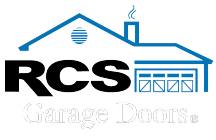
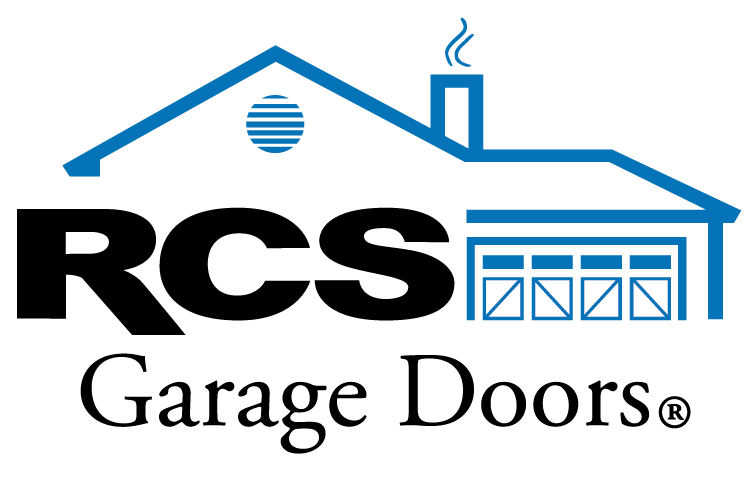
 Register My Door
Register My Door
